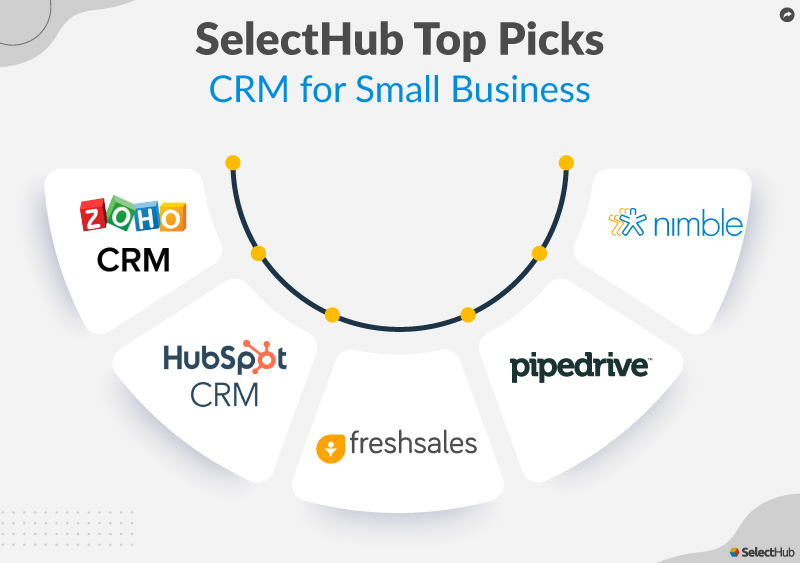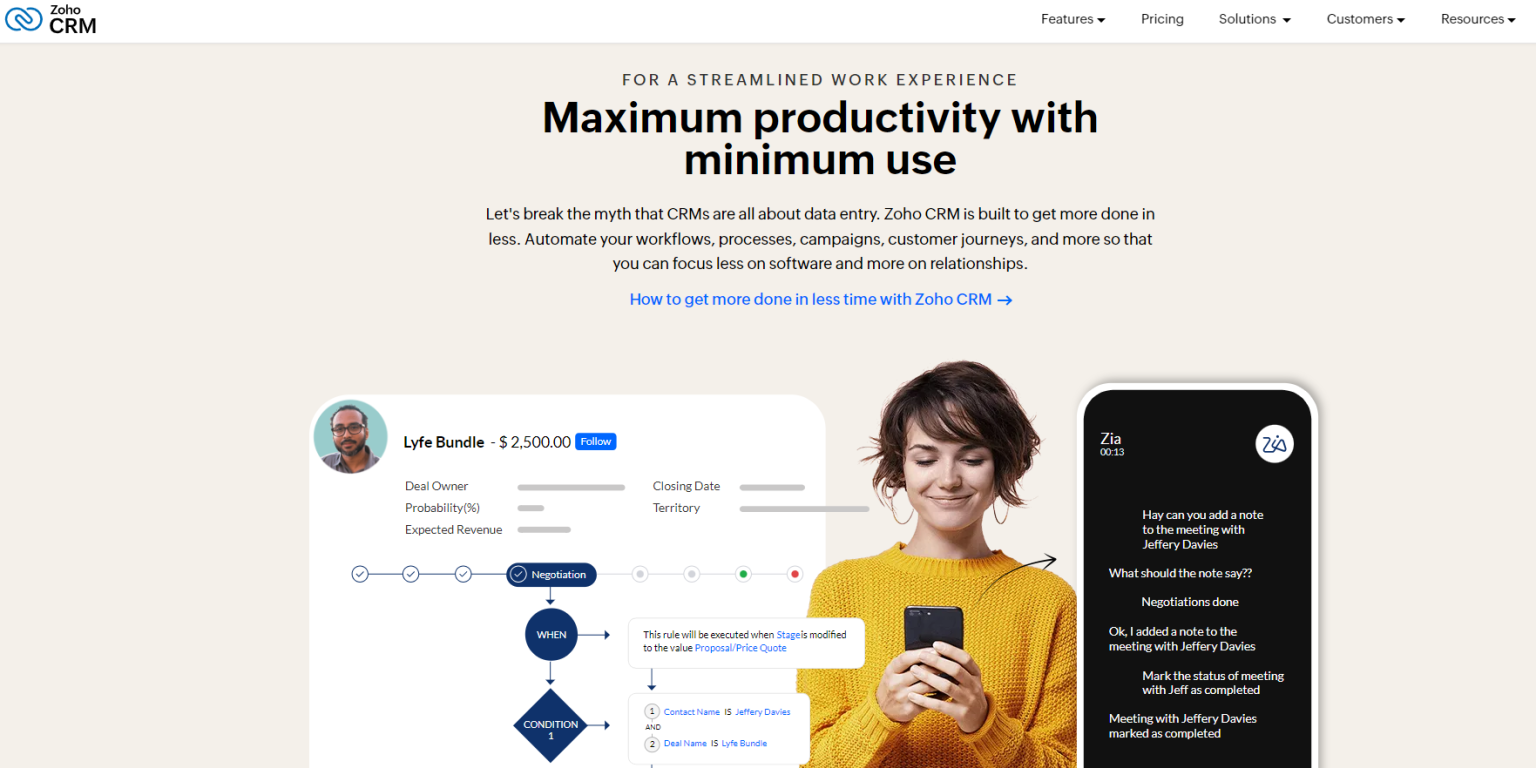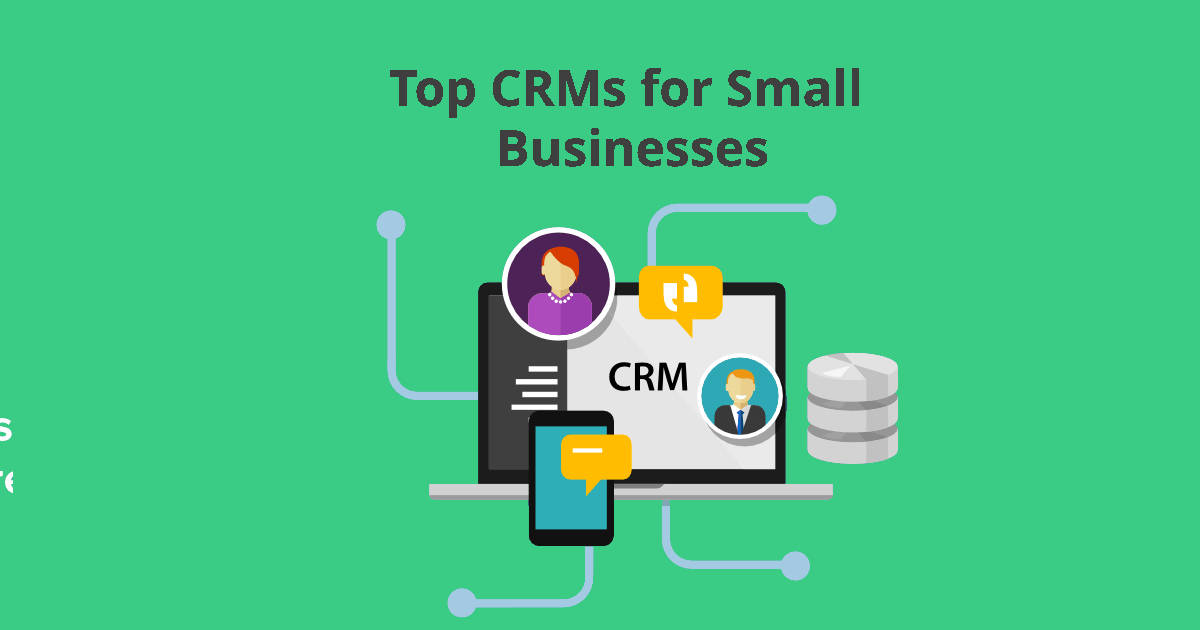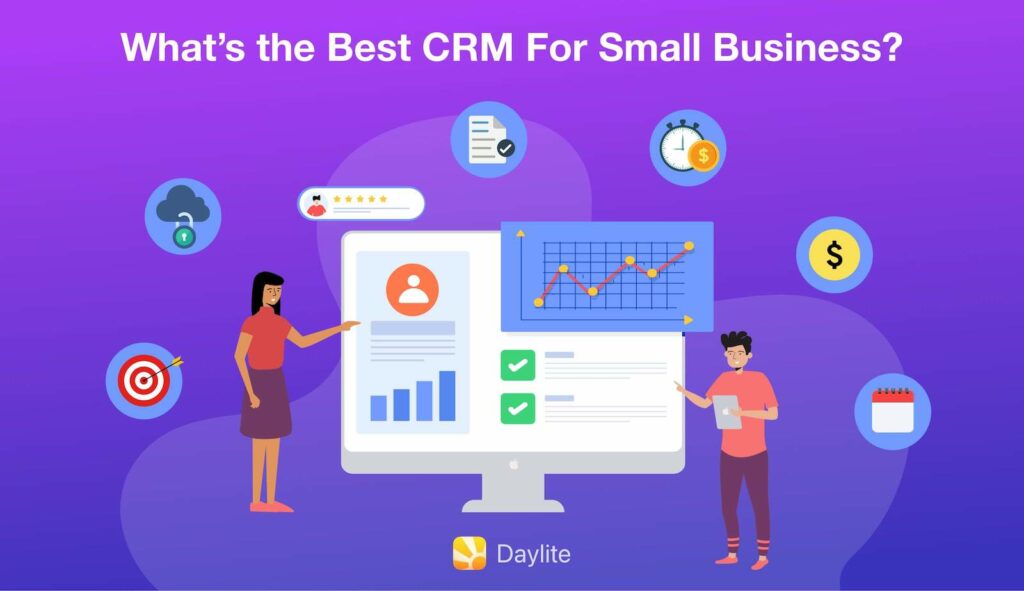
Starting and running a small painting business is no walk in the park. You’re juggling a lot: finding new clients, managing existing projects, keeping track of finances, and ensuring your team is on the same page. It’s a whirlwind of activity, and without the right tools, things can quickly become overwhelming. That’s where a Customer Relationship Management (CRM) system comes in. Think of it as your central hub, your digital command center, helping you streamline operations and boost your bottom line. This article dives deep into the best CRM options specifically tailored for small painting businesses, helping you find the perfect fit to take your business to the next level.
Why Your Painting Business Needs a CRM
Before we jump into the specific CRM recommendations, let’s talk about why they’re so crucial for painting businesses. In a nutshell, a CRM helps you:
- Organize Your Contacts: Say goodbye to scattered spreadsheets and sticky notes. A CRM centralizes all your client information, including contact details, communication history, project notes, and more.
- Improve Lead Management: Capture leads from various sources, track their progress through the sales pipeline, and nurture them with targeted communication.
- Streamline Project Management: Manage projects efficiently, from initial estimates to final invoicing. Track progress, assign tasks, and stay on top of deadlines.
- Enhance Communication: Communicate effectively with clients and your team through email, phone, and integrated messaging tools.
- Boost Sales: Identify opportunities for upselling and cross-selling, and track your sales performance to make data-driven decisions.
- Save Time and Money: Automate repetitive tasks, reduce manual errors, and improve overall efficiency, freeing up your time to focus on what matters most: painting!
Without a CRM, you’re essentially flying blind, relying on guesswork and manual processes. This leads to missed opportunities, frustrated clients, and ultimately, a less profitable business. A CRM is an investment, not an expense, and the returns can be significant.
Key Features to Look for in a CRM for Painters
Not all CRMs are created equal. When choosing a CRM for your painting business, here are some key features to prioritize:
- Contact Management: The ability to store and organize client information, including contact details, project history, and communication logs.
- Lead Management: Tools to capture, track, and nurture leads, including lead scoring, automated follow-up, and pipeline management.
- Project Management: Features to manage projects from start to finish, including task assignment, deadline tracking, and progress monitoring.
- Estimating & Quoting: The ability to create professional-looking estimates and quotes quickly and easily.
- Scheduling & Calendar: Integrated scheduling and calendar tools to manage appointments, site visits, and project timelines.
- Communication Tools: Email integration, SMS messaging, and other communication features to stay in touch with clients and your team.
- Reporting & Analytics: Customizable reports and dashboards to track key performance indicators (KPIs) and gain insights into your business.
- Mobile Accessibility: A mobile app or responsive design to access your CRM on the go.
- Integration Capabilities: The ability to integrate with other tools you use, such as accounting software, email marketing platforms, and payment gateways.
- Ease of Use: A user-friendly interface and intuitive design are essential, especially if you and your team aren’t tech-savvy.
Keeping these features in mind will help you narrow down your choices and find a CRM that truly meets the needs of your painting business.
Top CRM Systems for Small Painting Businesses
Now, let’s get to the good stuff: the top CRM systems specifically designed or well-suited for small painting businesses. We’ve considered factors like features, pricing, ease of use, and reviews to compile this list.
1. Zoho CRM
Overview: Zoho CRM is a robust and versatile CRM platform that offers a comprehensive suite of features for businesses of all sizes. While it’s not exclusively for painters, it provides excellent tools for managing leads, contacts, and projects, making it a strong contender.
Key Features for Painters:
- Contact and Lead Management: Easily store and organize client information, track leads, and manage the sales pipeline.
- Workflow Automation: Automate repetitive tasks, such as sending follow-up emails or assigning tasks based on lead status.
- Sales Automation: Automate the sales process, from lead generation to deal closing.
- Project Management: Manage painting projects with task assignment, deadline tracking, and progress monitoring.
- Reporting and Analytics: Gain insights into your sales performance, lead generation efforts, and project progress.
- Mobile App: Access your CRM on the go with the Zoho CRM mobile app.
- Integrations: Integrates with a wide range of third-party apps, including email marketing platforms, accounting software, and more.
Pros:
- Highly customizable to fit your specific needs.
- Offers a free plan for up to three users, making it a budget-friendly option.
- Provides a wide range of features at a competitive price.
- Excellent customer support.
Cons:
- Can be overwhelming for beginners due to its extensive feature set.
- The user interface can feel a bit cluttered at times.
Pricing: Zoho CRM offers a free plan for up to three users, as well as paid plans starting at around $14 per user per month. The pricing scales based on the features you need.
2. HubSpot CRM
Overview: HubSpot CRM is a popular and user-friendly CRM platform that’s known for its ease of use and powerful marketing automation features. It’s a great choice for painters who want to streamline their sales and marketing efforts.
Key Features for Painters:
- Contact Management: Manage client information and track interactions.
- Lead Management: Capture leads from various sources and track their progress through the sales pipeline.
- Sales Automation: Automate repetitive tasks, such as sending follow-up emails and creating tasks.
- Email Marketing: Create and send targeted email campaigns to nurture leads and promote your services.
- Marketing Automation: Automate your marketing efforts, such as lead nurturing and social media posting.
- Reporting and Analytics: Track your sales performance and gain insights into your marketing efforts.
- Free CRM: HubSpot offers a completely free CRM that includes a wide range of features.
Pros:
- User-friendly interface that’s easy to learn and use.
- Offers a free CRM with a generous set of features.
- Strong marketing automation capabilities.
- Excellent customer support and resources.
Cons:
- The free version has limitations on the number of contacts and emails.
- Some advanced features are only available in paid plans.
Pricing: HubSpot CRM offers a free plan with basic features. Paid plans start at around $45 per month and scale based on the features and contacts you need.
3. AccuBuild
Overview: AccuBuild is a construction-specific CRM and project management software that is specifically designed for the unique needs of contractors, including painters. It’s a more specialized solution than Zoho or HubSpot, focusing on the operational aspects of running a painting business.
Key Features for Painters:
- Estimating & Quoting: Create detailed and professional estimates and quotes.
- Project Management: Manage projects from start to finish, including scheduling, task assignment, and progress tracking.
- Scheduling: Create and manage project schedules.
- Customer Management: Manage client information, communication history, and project details.
- Accounting Integration: Integrate with accounting software for seamless financial management.
- Mobile Access: Access your CRM on the go with a mobile app.
Pros:
- Specialized for construction and contracting businesses, making it a good fit for painters.
- Offers robust project management and estimating features.
- Integrates with accounting software.
Cons:
- Can be more expensive than other CRM options.
- The interface may feel less modern compared to some other CRMs.
Pricing: AccuBuild’s pricing isn’t readily available online; you’ll need to contact them for a quote. However, it is generally considered to be a more premium option.
4. Jobber
Overview: Jobber is a field service management software that’s popular among service businesses, including painters. It’s designed to help you manage your entire workflow, from booking jobs to getting paid.
Key Features for Painters:
- Job Scheduling: Schedule jobs and assign them to your team members.
- Client Communication: Communicate with clients through email and SMS.
- Estimating & Invoicing: Create and send estimates and invoices.
- Payment Processing: Accept payments online.
- Client Management: Manage client information and project details.
- Reporting: Track your business performance.
Pros:
- Specifically designed for field service businesses.
- Easy to use and navigate.
- Offers strong job scheduling and dispatching features.
Cons:
- May not have as many advanced CRM features as some other options.
- Pricing can be higher than some other CRM options.
Pricing: Jobber offers various pricing plans based on the number of users and the features you need. Plans start at around $39 per month.
5. Freshsales
Overview: Freshsales, part of the Freshworks suite, is a sales-focused CRM with a focus on ease of use and powerful automation. It’s a solid choice for painters looking to streamline their sales process.
Key Features for Painters:
- Contact Management: Organize and track client information.
- Lead Management: Capture and nurture leads.
- Sales Automation: Automate tasks like sending follow-up emails and creating tasks.
- Email Integration: Integrate with your email provider for seamless communication.
- Reporting and Analytics: Track sales performance and gain insights.
- Mobile App: Access the CRM on the go.
Pros:
- User-friendly interface.
- Strong sales automation capabilities.
- Offers a free plan.
Cons:
- The free plan has limitations on the number of users and features.
- May not have as many project management features as some other options.
Pricing: Freshsales offers a free plan, as well as paid plans starting at around $15 per user per month.
Choosing the Right CRM: A Step-by-Step Guide
Choosing the right CRM can feel like a daunting task, but breaking it down into smaller steps can simplify the process. Here’s a step-by-step guide to help you make the right decision:
- Assess Your Needs: Before you start looking at CRMs, take the time to assess your business needs. What are your biggest pain points? What processes do you want to improve? What features are essential for your painting business? Make a list of your must-have features and nice-to-have features.
- Define Your Budget: Determine how much you’re willing to spend on a CRM. Consider both the monthly or annual subscription costs and the potential costs of training and implementation.
- Research Your Options: Research the CRM systems mentioned above, as well as any others that pique your interest. Read reviews, compare features, and check out their pricing plans.
- Consider Integrations: Determine which integrations are important to your business. Do you need to integrate with accounting software, email marketing platforms, or other tools? Make sure the CRM you choose offers the integrations you need.
- Try Before You Buy: Most CRM providers offer free trials or demos. Take advantage of these opportunities to test out the software and see if it’s a good fit for your business.
- Get Feedback from Your Team: Involve your team in the decision-making process. Ask for their feedback on the CRMs you’re considering. They’ll be the ones using the software on a daily basis, so their input is valuable.
- Choose the Right Plan: Select the pricing plan that best meets your needs and budget.
- Implement and Train: Once you’ve chosen a CRM, implement it and train your team on how to use it. Make sure everyone understands how to use the software and how it will benefit the business.
- Monitor and Evaluate: After implementing the CRM, monitor its performance and evaluate whether it’s meeting your needs. Make adjustments as needed.
Following these steps will help you choose the right CRM and ensure a successful implementation.
Tips for Successful CRM Implementation
Once you’ve chosen your CRM, successful implementation is key to realizing its benefits. Here are some tips to ensure a smooth transition and maximize the value of your investment:
- Plan Ahead: Before you start implementing the CRM, create a detailed implementation plan. This plan should include timelines, tasks, and responsibilities.
- Clean Up Your Data: Ensure that your client data is accurate and up-to-date before importing it into the CRM. Clean up any duplicates and standardize data formats.
- Customize the CRM: Take the time to customize the CRM to fit your specific needs. Configure the settings, create custom fields, and set up workflows that align with your business processes.
- Provide Training: Provide comprehensive training to your team on how to use the CRM. Offer hands-on training and create training materials to support them.
- Encourage Adoption: Encourage your team to use the CRM consistently. Emphasize the benefits of using the software and provide ongoing support.
- Monitor and Refine: Monitor the CRM’s performance and make adjustments as needed. Gather feedback from your team and use it to improve the system.
- Integrate with Other Tools: Integrate your CRM with other tools you use, such as accounting software, email marketing platforms, and payment gateways.
- Automate Tasks: Take advantage of the CRM’s automation features to automate repetitive tasks and free up your time.
- Focus on Data Entry: Ensure all relevant data is consistently entered into the CRM to maximize its usefulness.
By following these tips, you can increase the chances of a successful CRM implementation and realize the full potential of your investment.
The Benefits of a CRM: Beyond the Basics
While we’ve covered the core benefits of a CRM, let’s delve deeper into the ways a CRM can transform your painting business and elevate your success.
- Improved Customer Satisfaction: A CRM helps you build stronger relationships with your clients. By tracking communication, project details, and preferences, you can provide personalized service and anticipate their needs. This leads to happier clients and increased referrals.
- Enhanced Team Collaboration: A CRM provides a centralized platform for your team to collaborate on projects and share information. This eliminates communication silos, reduces misunderstandings, and ensures everyone is on the same page.
- Better Decision-Making: With a CRM, you have access to valuable data and insights about your business. You can track sales performance, identify trends, and make data-driven decisions to improve your bottom line.
- Increased Efficiency: By automating tasks and streamlining workflows, a CRM saves you and your team valuable time. This allows you to focus on more strategic activities, such as growing your business and providing excellent service.
- Scalability: As your painting business grows, a CRM can scale with you. You can easily add new users, expand your feature set, and adapt the system to meet your evolving needs.
- Data Security and Compliance: CRM systems offer robust data security features, protecting your client information from unauthorized access. They also help you comply with data privacy regulations, such as GDPR.
The benefits of a CRM extend far beyond simply organizing your contacts. It’s a powerful tool that can transform your painting business, improve customer satisfaction, and drive sustainable growth.
Final Thoughts: Painting a Picture of Success with the Right CRM
Choosing the right CRM is a critical step in building a successful painting business. By centralizing your client information, streamlining your processes, and gaining valuable insights, you can improve customer satisfaction, boost sales, and drive profitability.
Consider the options we’ve discussed, assess your unique needs, and choose the CRM that’s the perfect fit for your business. With the right CRM in place, you’ll be well-equipped to manage your projects, nurture your leads, and paint a picture of success for years to come. The investment in a CRM is an investment in your future, offering the tools you need to not just survive, but to thrive in the competitive world of painting.
Don’t wait – start exploring your CRM options today and take the first step towards a more organized, efficient, and profitable painting business. The right CRM will be your partner in success, helping you build stronger customer relationships, streamline operations, and ultimately, achieve your business goals. Good luck, and happy painting!


